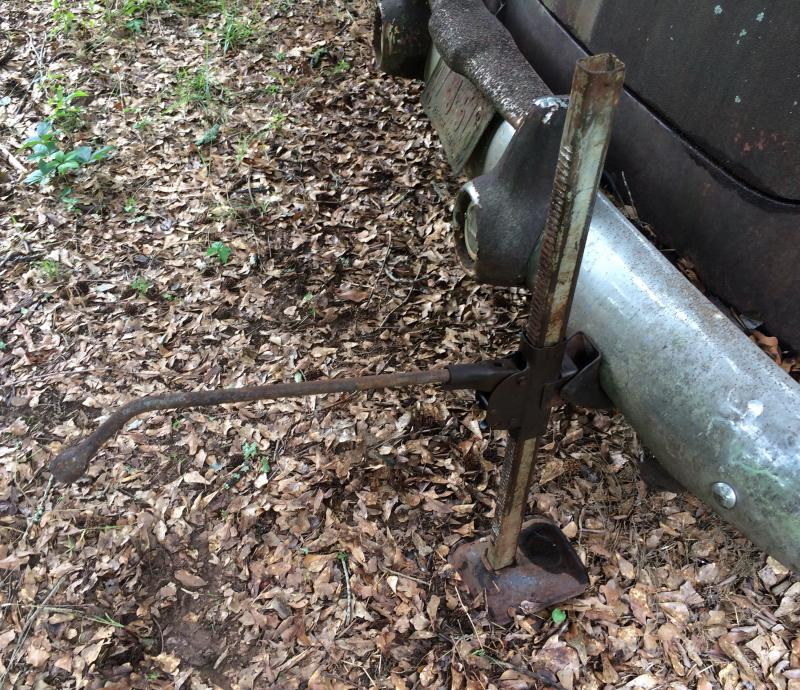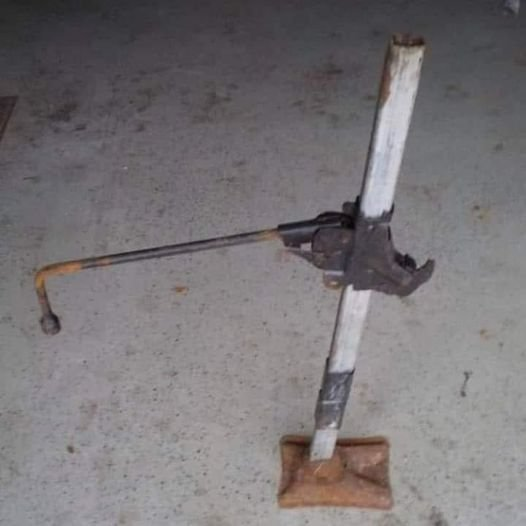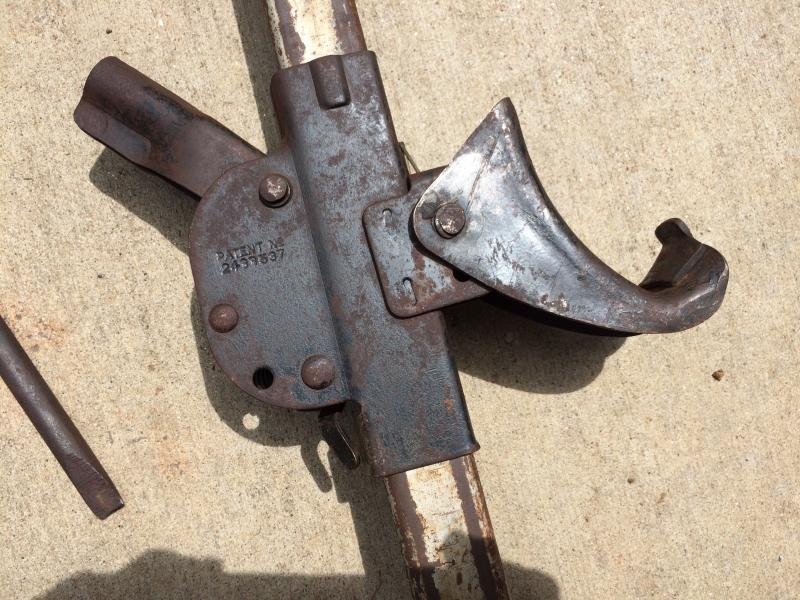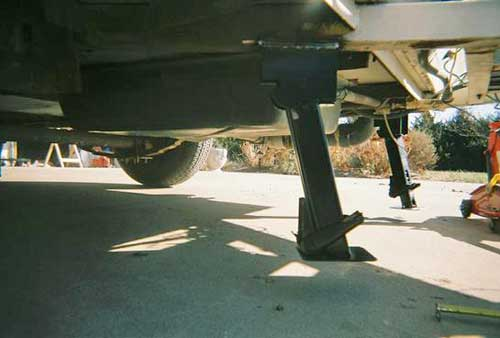Classic car collectors are always on the lookout for rare finds, from vintage signs to antique car accessories, and one particularly fascinating item is the antique car jack. These devices, designed to lift vehicles for maintenance and repairs, have evolved tremendously since their inception. But how did the car jack come to be, and how can you identify an antique model when browsing at a swap meet or auction?

In this article, we’ll take a deep dive into the history of car jacks, explore the different types that have been used over the years, and offer some expert tips on identifying and valuing antique car jacks.
The Origins of the Car Jack: Early Lifting Devices
Car jacks may seem like a modern invention, but their roots go back centuries before the automobile was even thought of. In fact, mechanical jacks were initially used for farming equipment and covered wagons, allowing users to lift heavy loads for maintenance or repair.
One of the earliest documented screw jacks was designed by Leonardo da Vinci, who created mechanical devices for lifting substantial weights. These early jacks laid the foundation for future innovations during the Industrial Revolution when factories and industries needed efficient lifting mechanisms. Jacks were integral in keeping operations running smoothly and ensuring worker safety.
Wagon Jacks: The Precursor to the Automotive Jack
As pioneers began exploring new lands and expanding westward in the 18th century, they needed mobile lifting tools for their wagons. Wagon jacks became common in farms and industrial settings, allowing settlers to replace wagon wheels, grease axles, or make repairs on the go.
These early jacks were simple yet effective, often relying on fulcrum designs or basic screw mechanisms. Though crude by today’s standards, they played a crucial role in American frontier exploration, keeping wagons moving across rough terrain.
The First Hydraulic Jack: A Turning Point
In 1851, Richard Dudgeon invented the first hydraulic lift, marking a turning point in mechanical lifting technology. While initially used in construction and industrial settings, this development paved the way for hydraulic jacks to be adapted for automotive use at the turn of the 20th century.
Hydraulic jacks used liquid pressure to multiply force, allowing for much greater lifting capacity with less effort. It wasn’t until the early 1900s that these principles would make their way into the burgeoning auto industry, as cars became a daily necessity.

The Evolution of Car Jacks: From Model T to Modern Times
The rise of the automobile in the early 1900s brought with it a new demand for portable and reliable jacks. Flat tires and roadside repairs were commonplace, so car manufacturers began including simple screw jacks with vehicles. The Model T Ford came equipped with a basic car jack, made of heavy cast iron, that required manual effort to raise the vehicle.
These early jacks were extremely sturdy but cumbersome. Over time, manufacturers improved the designs to include tripod or dual-legged stands, which offered greater stability. By 1910, companies like Weaver introduced trolley jacks, which could lift an entire vehicle’s axle, improving repair efficiency for mechanics and car owners alike.
The invention of the scissor jack in 1908, credited to Joseph LaFrance of Quebec, refined car jacking further. This design is still widely used in modern vehicles, as it is compact, easy to use, and cost-effective.
Identifying Antique Car Jacks: What to Look For
If you’re hunting for an antique car jack, you’ll want to know how to differentiate a rare find from a common model. Here are the key factors to consider when identifying antique car jacks:
1. Look for Logos or Trademarks
Most antique jacks will have a manufacturer’s mark or logo stamped on them. Brands like Barrett, Weaver, or Hi-Lift were popular in the early 20th century and are considered highly collectible. Check the jack for serial numbers, labels, or company names, which can help verify its authenticity and provide clues to its age.
2. Consider the Construction Material
Many early car jacks were made of cast iron, which was the standard material used for the rugged, durable tools of the time. If the jack is unusually heavy, it’s likely an older model. Some earlier wagon jacks were made of wood or iron and are especially sought after by collectors.

3. Check for Date Codes
Certain car manufacturers, such as Ford, stamped their jacks with date codes, particularly during the 1960s and 1970s. If you find a jack with a visible date code, it could help you narrow down the time period and, potentially, the car model it was paired with.
4. Assess the Condition and Functionality
While many antique jacks are still functional, their condition can vary. Jacks that show signs of wear or rust may be less valuable, but they could still appeal to collectors. However, if a jack still works smoothly, that can increase its desirability. Look for a working gear mechanism and check the overall stability.
5. Examine Threads, Seals, or Rings
Older jacks often used wax rings or had unique threading designs that can distinguish them from modern versions. Inspect the hydraulic components carefully—if they’ve been replaced with newer parts, this can affect the jack’s value.
Valuing Antique Car Jacks: How Much Are They Worth?
The value of an antique car jack depends on several factors, including its rarity, condition, and historical significance. Most antique jacks sell for less than $100, but rarer models, particularly those tied to specific cars like Mustangs or Corvettes, can fetch prices of over $500.
It’s essential to do thorough research before making a purchase. Consult with classic car appraisers or antique tool specialists, who can offer insight into the worth of a specific jack. Additionally, online auction sites and swap meets are excellent places to gauge market demand.

Should You Recondition Antique Car Jacks?
Reconditioning an antique jack can help restore its functionality, but you should tread carefully if you’re aiming to maintain its historical value. While replacing damaged parts or adding a fresh coat of paint might seem like a good idea, these alterations could lower the jack’s worth, particularly if it removes the original patina or alters its appearance.
The Future of Car Jacks: From Necessity to Obsolescence
While car jacks were once a crucial accessory in every vehicle, modern advancements in tire technology and automobile design have made them less common. Many newer cars no longer come equipped with full-sized spares, relying instead on run-flat tires or emergency tire repair kits. As a result, the need for traditional car jacks has diminished, though they remain an essential tool for vintage car owners and enthusiasts.
Conclusion: A Piece of Automotive History
Antique car jacks represent an important piece of automotive history. From early wagon jacks to the development of hydraulic systems, these tools helped pave the way for the vehicles we drive today. For collectors, owning an antique car jack is not just about function—it’s about owning a relic of a bygone era. With a keen eye and a little research, you can identify and add these fascinating pieces to your collection, preserving a small but significant part of the automotive world.


